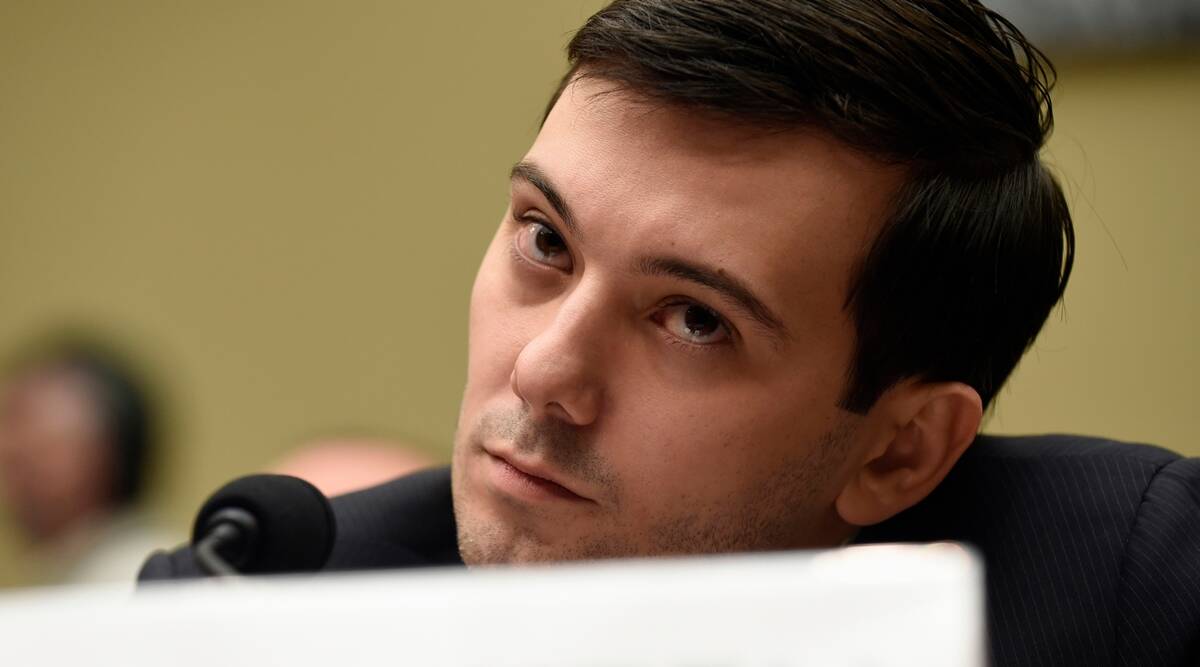
Kathy Sego, a choir teacher from Indiana, sat before the Senate Finance Committee in late January and tried to show lawmakers how drastically drug pricing needs to change.
Sego told senators how her diabetic son secretly rationed his insulin after he realized it cost his insured parents $1,700 per month. She described his sharp and sudden weight loss and spiraling health problems. She explained what it was like to take a trip to Hungary and see a $10 price tag for the same vial of insulin that cost them $487 back home.
She detailed how she and her husband each work more than 80 hours per week and stretch out their payments to the point their electricity got cut off so they could buy the medicine.
Then lawmakers and experts got to work. That meant Sego sat for hours mostly in silence, as analysts seated beside her talked about innovation, competition and inflation caps.
The scene is familiar on Capitol Hill, where the pageantry played out in hearing rooms fades into a cautious dance.
It’s been nearly four months since an energized Democratic majority in the House started 2019 with promises of sweeping reform of drug prices, supported by the ambitious goals of the Trump administration and milder assurances of the GOP-led Senate. Although lawmakers emphasize that it’s still early in the 116th Congress, and reiterate their agreement to do something big, the window to develop their ideas is narrowing.
Leading lawmakers have yet to decide what “something big” would look like. They certainly haven’t cohesively rallied around the boldest Trump administration ideas, such as banning rebates for pharmacy benefit managers and tying high Medicare Part B drug prices to their costs in foreign countries that pay less. And there are plenty of factors in play to shrink Congress’ drug-pricing ambitions down to size.
Last week brought a fresh reminder of the pharmaceutical industry’s massive war chest and targeted lobbying. Early 2019 fundraising receipts for members of Congress show a trail of pharma donations to key committee leaders.
AN EARLY START
Top pharmaceutical company donations
January-March 2019
Pallone for Congress
Rep. Frank Pallone Jr. (D-N.J.)
Chair, House Energy and Commerce Committee
$2,500 AmerisourceBergen
Corp. PAC
$2,000 Pfizer PAC
$1,000 Johnson & Johnson PAC
$1,000 Amgen PAC
Richard Neal for Congress
Rep. Richard Neal (D-Mass.)
Chair, House Ways and Means Committee
$2,500 Genentech PAC
$2,500 Sanofi U.S. Services
Employees’ PAC
$2,000 Abbott PAC
Source: Federal Election Commission filings
House Energy and Commerce Committee Chair Frank Pallone (D-N.J.), Ways and Means Chair Richard Neal (D-Mass.), and Energy and Commerce Health Subcommittee Chair Anna Eshoo (D-Calif.) collected thousands of dollars from pharma groups and companies.
That isn’t unusual, as the pharmaceutical industry has traditionally put its money toward committees of influence.
But this year, when Democratic leadership has promised regular order to give committee chairs sway over legislation, these chairmanships are as important as ever.
Pallone’s top pharma contributors in the first quarter of 2019 included Pfizer, AmerisourceBergen, Johnson & Johnson and Amgen. Neal’s contributions came from Abbott, Biogen, Genentech, Sanofi and Merck, among others.
Eshoo brought in more than $20,000 from Gilead Sciences, Denmark-based Lundbeck, Jazz Pharmaceuticals, Amgen, AbbVie, the Pharmaceutical Research and Manufacturers of America, and executives of some of those firms.
None of the tallies count money from consulting and lobbying firms that also represent the industry.
The outlier among the House committee heavyweights is Rep. Lloyd Doggett (D-Texas), who chairs the Ways and Means Committee’s health panel. A vocal pharma critic, he has proposed holding drug patents as leverage to lower prices for Medicare. And manufacturers responded accordingly.
Still, Doggett has a biotech donor in the Austin-based company Asuragen, whose executives contributed more than $7,000 to his 2020 campaign.
Major pharma contributions aren’t new for any of these lawmakers—a criticism that followed Eshoo in particular as she assumed the Energy and Commerce Health Subcommittee chairmanship. Her district houses biotech giants and in the last election cycle the industry was her biggest donor, accounting for more than $160,000 of her campaign funds, according to OpenSecrets.org.
When Pallone was ranking member on Energy and Commerce, pharma gave nearly $250,000 to his campaign for the 2018 cycle. That compares to roughly $414,000 he raised from other health professional groups.
Neal’s donations were even higher. Last cycle he raised more than $282,000 from the drug industry. That’s in comparison to more than $381,000 from insurers, according to OpenSecrets.
For context, the former GOP chairs of these same committees were top recipients of pharmaceutical money in the 2018 election cycle, according to an analysis from the Center for Responsive Politics, which operates the OpenSecrets website. Rep. Greg Walden (R-Ore.), then leader of Energy and Commerce, ranked first for pharma contributions to House lawmakers last year, while Rep. Kevin Brady (R-Texas), former chair of Ways and Means, came in fourth.
These are the easy-to-track contributions. There’s also so-called dark money, which is funneled through 501(c) organizations and used to advocate policy along ideological arguments.
The Center for Responsive Politics last November found PhRMA disbursed millions of dollars to dark money groups aligned with Republicans.
This boosts issues-focused groups to lobby Republicans in Congress against some of the administration’s ideas, notably the international reference-pricing model for Medicare Part B.
The top 501(c) recipients of PhRMA money included the American Conservative Union, an organization that has been out front in opposition to the reference-pricing proposal.
Last year PhRMA also gave $1.5 million to the American Action Network—a group that in 2016 spent $2.6 million on an issues campaign against a Medicare Part D negotiation policy.
Conservative groups are also arguing against ideas like personal importation—bringing $10 insulin back from Hungary, for instance—which Senate Finance Committee Chair Chuck Grassley, a Republican, has supported.
The other side of the aisle raked in big bucks too: $1.19 million of PhRMA’s contributions went to Center Forward, a group that spent $1.3 million on Democrats for the 2018 midterms. Among the top recipients for Center Forward were the two moderate Democratic House political action committees—the Blue Dogs and the New Democrat Coalition.
Members of these groups are more sensitive than other Democrats to arguments about “price fixing,” and they also have more power in numbers now. The New Democrat Coalition got an enormous boost in the 2018 midterms, as Democrats took the House through swing districts nabbed by moderates.
The other critical influence on how the final drug-pricing legislation will turn out has less to do with money, but is arguably more pressing: the calendar. Grassley said he wants the Senate package wrapped up by June or July, given all that Congress needs to address before the fall—like the debt limit.
So far, House committees have approved uncontroversial measures like , a and the Creates Act, all of which are expected to go to the House floor. Democrats in particular want to go much bigger, yet House Speaker Nancy Pelosi (D-Calif.) has yet to disclose the “flagship” bill that would allow Medicare to negotiate prices in Part D.
In the vacuum of other Medicare negotiation proposals, progressives in the House have and plan to take their advocacy for his idea nationwide through Facebook Live town halls. But the idea likely won’t gain traction since it affects the U.S. patent system so drastically, and committee Republicans have made it clear they would never support it.
This leaves other Democrats hanging, and the conversations about hard-line policy have remained vague.
Rep. Kurt Schrader (D-Ore.), a leading member of the Blue Dogs and the New Democrat Coalition, said he thinks people want Congress to do something beyond low-hanging fruit, but he couldn’t pinpoint exactly what that is.
Eshoo was also noncommittal. “I think it’s important to explore all avenues to lower drug prices,” she said, when asked for her view on a policy like arbitration. “I don’t think that lowering drug prices is done by one action.”
For all the industry influence and time constraints, there’s one more pressure point: 2020. Democrats want to defend their House majority and Republicans have a lot of Senate seats up for a challenge, not to mention the presidency.
“Republicans and Democrats have got to deliver for the American people on lower prescription drug prices, period,” Rep. Debbie Dingell (D-Mich.) said. “You hear about the cost of insulin wherever you go, from the children to the seniors. So instead of everybody pitting us against each other, we’ve got to find a way to deliver for the people who elected us, or everyone’s in trouble.”
[“source=modernhealthcare”]























